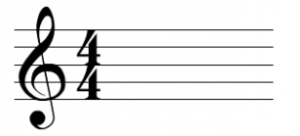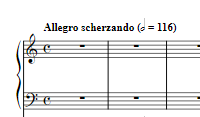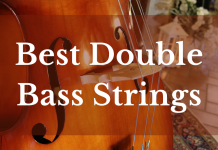Learning a new instrument or a new musical piece can be quite challenging. Aside from ensuring that the notes that you are producing are sensible, you also have to make sure that you are playing at the right tempo. This can be quite tricky, especially to those who are still beginning how to play an instrument such as violin, since you have to be attentive and composed at the same time. This guide will teach you how to use a metronome and offer an overview of the different types of metronomes available.
Luckily, there is a gear that could help you be precise in your manner of playing. A metronome, no matter what type it is, is beneficial in mastering one’s tempo. Not only does it benefit the beginners, but this device could also be useful for intermediate and advanced musicians.
What is a metronome?
Before going any further, it is only necessary to get to know what a metronome is. Basically, a metronome is a tool that makes repeated beats set at a steady pace. The metronome produces a pulsing click that is indicated by beats per minute (BPM). Such pulse could be set at different rhythms or speeds, depending on the level of difficulty or the recommended tempo of the musical piece. Many modern tuners come equipped with metronomes.
The metronome also provides a way to let musicians know if they are already slowing down or they are speeding up while they are practicing. Hence, it is an essential practice tool, especially when learning tempos and developing a sense of rhythm. Moreover, a metronome also provides a way to help beginners to practice a music piece better. By setting a steady beat throughout the practice, you could easily identify how long a note should be played.
By becoming adept at using metronomes, musicians could play tricky measures with ease, while keeping them from losing from the appropriate beat.
Many musical pieces have their BPM placed before the staff. This way, musicians could be guided on how fast or how slow the piece is. Musicians could then adjust the tempo of the metronome depending on the BPM provided.
A ballad or any slow song has a tempo of around 60 BPM. On the other hand, dance or rock songs might have a tempo of at least 120 BPM.
How To Use a Metronome
Usually, beginners are not sure of how to use a metronome. However, using it is not really complicated.
One of the first things that you have to adjust in a metronome is the time signature. Time signatures are numbers written in a musical piece. They indicate the number of beats in a measure. You generally find this on the left side of the staff.
Common songs have a 4-4 time signature, which means there should be four beats in a measure. Other common time signatures are 2-4 and 3-4.

After setting the time signature, you have to set the BPM. As mentioned earlier, many musical pieces have their recommended BPM placed before the staff. This should be the tempo that you are going to use during the actual performance. However, it is important to slow it down during practices, especially if you are still learning how to play the piece or the instrument. If the recommended BPM is 150, you should start with around 80 BPM. You should settle on a tempo that you find comfortable to play with, then gradually increase it as you progress.

Familiarize yourself with the piece as you gradually increase the tempo of the piece. You should try focusing on the smooth transition of your movements. Even if the speed has been toned down to a slower beat, your shifts should still be snappy.
Moreover, the dynamics of your performance should also be taken into consideration. Improvise different dynamic accents so that you could keep the piece more interesting. Increase the volume of the notes that need to be stressed. Tone down on the parts that need to be quiet.
Continue increasing the tempo as you progress through your practice. As you advance with the piece, you should also begin mastering the speed until its recommended tempo. You could also focus on relaxing yourself from the tension that arises while you are increasing your speed. This includes modifying your techniques.
Types of Metronomes
There are just about many metronomes that you could count on your hands. Each of these metronomes offers benefits that you could find useful. Here are five of the most common types of metronomes.
1. Traditional Metronome
Also known as mechanical or analog, a traditional metronome provides all the essential functionalities that you need in a metronome. Such metronome works with a wind-up mechanism. Hence, electricity or battery is not required. To adjust its speed, you only have to move the weight of its pendulum arm.
2. Clip-On Digital Metronome
A compact device, the clip-on digital metronome is equipped with a clip on its back. Hence, this metronome could be clipped on any instrument like a guitar. It could also be clipped on a piece of clothing or a music stand.
3. In-ear Digital Metronome
An in-ear digital metronome is designed to be placed comfortably on your ear. While its functionalities have been reduced, the essential functions in a typical metronome are present in the device.
4. Pedal Digital Metronome
A digital pedal metronome is essential for those who are into electric guitars and basses. Usually, the pedal does not only contain a metronome but also has a built-in tuning capability. Like any other digital metronome, this pedal digital has other functions like accents and subdivisions.
5. Dial Digital Metronome
A digital dial metronome is equipped with a dial that could be adjusted in increments to select the tempo. Many dial metronomes have a mini-jack socket where users could plug in a pair of headphones.
Final Thoughts
A metronome is an essential tool for musicians of various expertise. Hopefully, this article has provided you with knowledge and insights on the use of metronomes in music. With constant use of metronomes, you could help yourself improve and become the musician that you want to be.
You can use our online metronome.
Table of Contents








![Best Double Basses Review [2024] cecilio double bass review](https://orchestracentral.com/wp-content/uploads/2018/02/cecilio-double-bass-review-218x150.jpg)